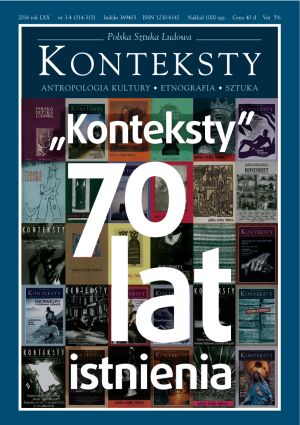Flamandowie kontra Walonowie? Paradygmaty tożsamości w sztuce belgijskiej
Flemings contra Walloons? Paradigms of Identity in Belgian Art
Author(s): Irena KossowskaSubject(s): History, Fine Arts / Performing Arts
Published by: Instytut Sztuki Polskiej Akademii Nauk
Keywords: art; Belgium; Flemings; Walloons
Summary/Abstract: Cultural diplomacy developing during the inter-war period assumed the existence both a bilateral exchange of artistic undertakings and contracts enabling the circulation of art exhibitions across the Continent. This text concentrates on an exposition of modern Belgian art organised in 1935 as part of a Polish-Belgian cultural dialogue. The presentation, shown at the Warsaw Institute for the Propaganda of Art, was conceived as a retrospective review of Belgian art from the 1830-1930 period. The display, featuring 146 exhibits from the domains of painting, graphic art, and sculpture was part of a sequence of itinerant exhibitions organised by the Belgian government at the beginning of the 1930s to commemorate the hundredth anniversary of winning political sovereignty. Featured at assorted European capitals such expositions served the enhancement of the prestige of the Belgians as heirs of the Flemish-Low Countries culture. The cultural core of this national “community” artificially created by foreign powers, i.e. the land of Belgium, which came into being during the nineteenth century, was the heritage of past epochs, whose gravity was to dominate ethno-cultural conflicts between contemporary Flemings and Walloons. Taking into consideration the complicated political configuration of political interests, social reasons, and cultural trends in Belgium during the 1930s we are entitled to ask: was the dissonance between Flemish Expressionism and Walloon Surrealism and magical realism, characteristic for contemporary Belgian art, reflected in the structure of the exhibition on show in Warsaw? Or was the exposition construed in such a manner so that it would testify to the cohesion of Belgian national identity? The author of this text sought an answer to the posed questions in order to capture the mechanisms of cultural propaganda, on the one hand, and to define the critical competence of the Polish reviewers of the exhibition, on the other hand.
Journal: Konteksty
- Issue Year: 314/2016
- Issue No: 3-4
- Page Range: 533-543
- Page Count: 11
- Language: Polish
- Content File-PDF

